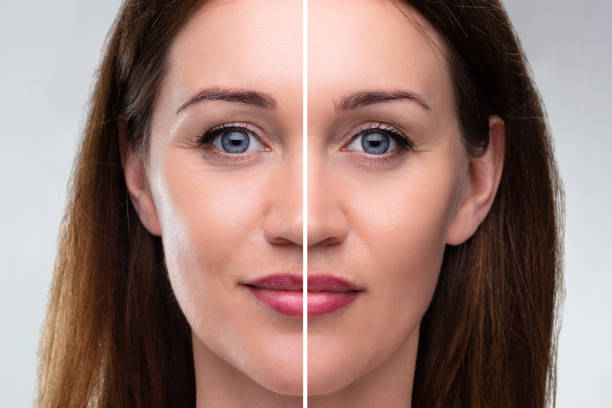Aging inevitably brings changes to our skin, especially on the face, where sagging skin and wrinkles become more noticeable. These changes can affect how we feel about ourselves, impacting confidence and self-esteem. Fortunately, a facelift offers a powerful surgical solution to restore a youthful appearance by tightening sagging skin and smoothing wrinkles. This comprehensive guide explores the benefits, procedure, risks, and recovery associated with this transformative treatment.
What Is a Facelift?
A facelift(شد الوجه في الرياض), medically known as rhytidectomy, is a surgical procedure designed to reduce visible signs of aging on the face and neck. It primarily targets sagging skin, deep wrinkles, and folds around the cheeks, jawline, and neck. By removing excess skin and tightening underlying tissues, a facelift redefines facial contours, resulting in a firmer, smoother, and more youthful look.
How Does a Facelift Work?
During the procedure, the surgeon makes carefully placed incisions, often hidden along the hairline and around the ears. These incisions allow access to the deeper layers of facial tissue, which are then lifted and repositioned. Excess skin is trimmed away, and the remaining skin is redraped to create a natural, rejuvenated appearance. This approach not only addresses surface wrinkles but also the underlying causes of sagging, offering longer-lasting results.
Why Consider a Facelift in Riyadh?
Choosing Facelift in Riyadh means accessing expert surgical care combined with advanced medical technology. Riyadh has become a hub for cosmetic surgery, attracting skilled surgeons who specialize in facial rejuvenation. The city’s medical centers provide state-of-the-art facilities, ensuring patient safety and high-quality outcomes.
Advantages of Facelift in Riyadh
-
Expertise: Surgeons in Riyadh are often trained internationally and bring extensive experience in facelift techniques.
-
Advanced Techniques: From traditional facelifts to minimally invasive options, patients receive personalized treatment plans.
-
Cultural Sensitivity: Care providers respect cultural values, offering discreet and comfortable environments.
-
Comprehensive Care: Clinics provide thorough pre-surgery consultations and post-operative support to ensure smooth recovery.
Types of Facelift Procedures
Facelift techniques vary depending on the patient’s needs and the extent of aging. Common types include:
Traditional Facelift
This method involves longer incisions and extensive tissue repositioning, ideal for significant sagging and deep wrinkles.
Mini Facelift
A less invasive option with smaller incisions, suitable for mild to moderate aging signs and quicker recovery.
Mid-Facelift
Focuses on the cheek area to lift sagging mid-face tissues, improving nasolabial folds and under-eye hollows.
Deep Plane Facelift
Targets deeper facial muscles and tissues, offering more dramatic and longer-lasting results by repositioning the foundational structures of the face.
Preparing for Your Facelift
Proper preparation is essential for a successful facelift. Patients undergo a thorough medical evaluation to ensure they are healthy enough for surgery. It is important to avoid smoking and certain medications that can increase bleeding risk. Preparing a comfortable recovery space at home and arranging for post-surgical support can ease the healing process.
What to Expect During the Facelift Procedure
Facelift surgery is typically performed under general anesthesia or sedation to ensure patient comfort. The surgeon begins by making incisions in discreet locations, then carefully lifts and tightens the underlying muscles and tissues. Excess skin is removed, and the incisions are closed with fine sutures or skin adhesives to minimize scarring.
The entire procedure can last several hours, depending on the technique used and the extent of correction required. Patients usually experience minimal discomfort during surgery thanks to anesthesia.
Recovery and Aftercare
Recovery from a facelift varies but generally involves some swelling, bruising, and mild discomfort. Patients are advised to keep their heads elevated and avoid strenuous activities during the initial healing phase. Follow-up visits with the surgeon ensure proper healing and timely removal of sutures if necessary.
Long-term care includes protecting the skin from sun exposure and maintaining a healthy lifestyle to prolong the results. Many patients report a renewed sense of confidence as their facial appearance improves.
Risks and Considerations
Like any surgical procedure, a facelift carries potential risks. These include infection, bleeding, scarring, nerve injury, and anesthesia complications. While rare, these risks highlight the importance of choosing a qualified, experienced surgeon and following all pre- and post-operative instructions carefully.
Patients should also have realistic expectations, understanding that results vary based on individual factors such as skin quality and healing ability.
Benefits of a Facelift
-
Youthful Appearance: Effectively reduces sagging skin and wrinkles for a refreshed look.
-
Long-Lasting Results: Addresses deeper facial structures, providing durable improvements.
-
Boosted Self-Esteem: Many patients experience enhanced confidence and satisfaction.
-
Natural-Looking Outcome: Skilled surgeons ensure results that complement natural facial features.
-
Improved Facial Contours: Restores definition to the jawline, cheeks, and neck.
Conclusion
A facelift is a proven solution for those seeking to combat sagging skin and wrinkles, offering a significant boost to appearance and self-esteem. Opting for a Facelift in Riyadh provides access to expert care, advanced techniques, and a supportive environment for your transformation journey. With proper preparation and realistic expectations, a facelift can help you rediscover a youthful, vibrant version of yourself.
Frequently Asked Questions
Q1: How long does it take to see the final results after a facelift?
Final results typically become visible several months post-surgery, once swelling and bruising have fully subsided, revealing a natural, rejuvenated appearance.
Q2: Is a facelift painful during and after the procedure?
The surgery is performed under anesthesia, so there is no pain during the procedure. Post-operative discomfort is usually manageable with prescribed medications and subsides within a few weeks.
Q3: Can a facelift be combined with other cosmetic procedures?
Yes, facelifts are often combined with procedures like eyelid surgery or neck lifts to achieve comprehensive facial rejuvenation.
Q4: How long do facelift results last?
Results can last several years, especially with good skincare and healthy lifestyle habits, although aging will continue naturally.
Q5: Are there non-surgical alternatives to a facelift?
Non-surgical options like fillers and skin tightening treatments exist but typically provide temporary and less dramatic results compared to a surgical facelift.





